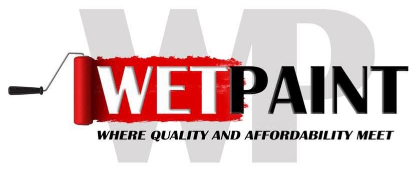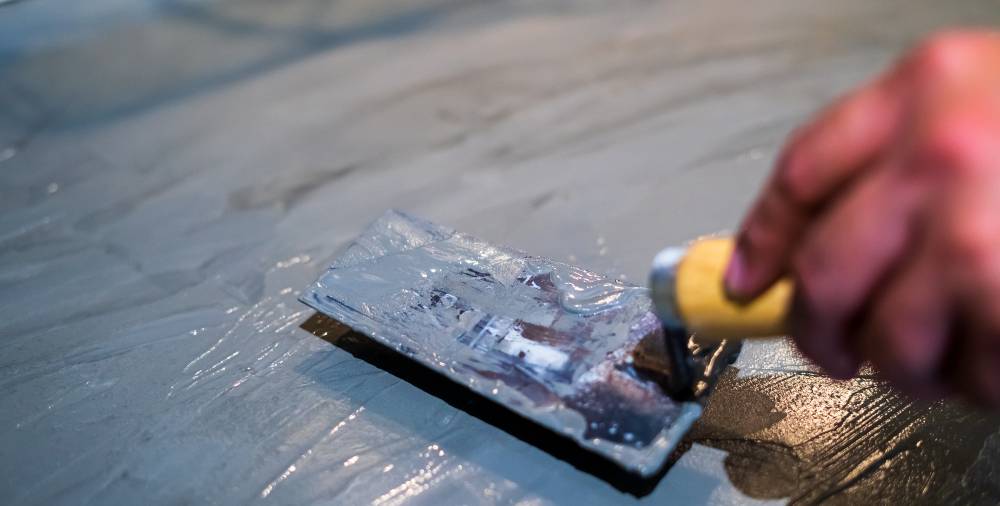Welcome to our comprehensive guide where we go head-to-head on two of the most popular flooring options: epoxy floors and polished concrete. Understandably, it may be a tough decision to make regarding what flooring solution to go for since they both come with appealing advantages.
Even so, both epoxy flooring and polished concrete have distinct features and factors that may influence your decision depending on your specific needs. In this section, we’ll answer the following questions to help you make more informed purchase decisions:
- What is an epoxy floor?
- What is polished concrete?
- What are the benefits of epoxy flooring?
- What are the advantages of polished concrete flooring?
- How does epoxy flooring compare to polished concrete?
What is an Epoxy Floor?
Epoxy is a chemical compound made by polymerizing a resin, a hardener, and other basic compounds. Mixing the combination results in a robust and top-quality blend used as a floor coating in residential, commercial, and industrial structures.
Epoxy flooring involves applying the compound onto mechanically prepared concrete to create a rock-solid, chemical-resistant floor. Below are some popular types of epoxy flooring and where to apply them:
- Self-leveling epoxy floors. It is suitable for new, cracked, damaged, or old concrete floors and comes in different colors that you can choose to match your residential needs. This flooring type creates a shiny, seamless look that can redefine your kitchen, resisting any grime or stain spilled at it.
- Epoxy mortar floors. This is a combination of 100% epoxies and quartz or graded sand. It is suitable for spaces requiring a floor that’s chemical-and-impact-resistant, e.g., your home garage. Also, you can use it to repair damaged concretes before applying other epoxies.
- Quartz-filled epoxy floors. This is made up of top-quality epoxy polymer resin plus stained quartz grains. You can use it to decorate restrooms, living rooms, and other spaces that ought to be slip-resistant.
- Epoxy flake floors. This type contains colored flake materials dipped into the epoxy, creating a vibrant multi-colored look. It also offers subtle grooves that minimize slips and falls in the kitchen, corridor, doorway, etc.
What is Polished Concrete
Polished concrete is a flooring solution made by mechanically grounding, honing, and polishing concrete floors using abrasives and hardeners. The hardener infiltrates the concrete and creates a chemical reaction that creates a strong bond, hardening and dust-proofing the surface.
For effective polishing, the surface undergoes at least four grinding series, each step requiring a progressively finer grinding tool. Such tools as disks (similar to sandpaper) are usually used to grind down or polish the surface until the desired degree of shine or smoothness is attained.
During the polishing process, the contractor applies an impregnating sealer that sinks into the concrete to protect it inside out. The sealer increases the surface’s hardness and intensity to keep it amazingly impact-resistant. Some contractors spread the polishing compound onto the surface during the final stages to make the floor even shinier. This also helps eliminate any residue remaining on the surface to keep it 100% dirt-resistant.
What are the Advantages of Epoxy Flooring?
Durability
One reason to go for epoxy flooring is that it can endure any wear and tear resulting from everyday strenuous activities. Even better, this flooring solution doesn’t crack or chip easily, eliminating any worries should you drop kitchen equipment or household staff.
Hassle-free Maintenance
Thanks to its glossy and resin finish, cleaning or wiping debris or liquid spill-overs on epoxy flooring is such a breeze. What’s more, the installation is usually seamless, leaving no room for bacteria or mold growth and dirt accumulation in the edges. This makes it a hygienic option that’s free from allergens.
Cost-effective
Installing an epoxy floor is more economical than conventional flooring systems like hardwood and vinyl. Even better, it stands the test of time, so you’ll hardly spend on repairing or maintaining the floor.
Slip-resistant
Epoxy flooring doesn’t retain moisture on its surface, making it less risky of fall or slip accidents. What’s more, some types contain a slip-resistant additive that guarantees the protection of your family and visitors.
What are the Benefits of Polished Concrete Flooring?
Optimal Reflectivity
With a polished concrete floor, you can rest assured of a vibrant and luminous room for reduced energy bills and more safety.
Stain-resistance
During installation, polished concretes are usually densified and sealed to turn a porous floor into an impermeable surface that prevents oil, stains, and other contaminants from sticking or penetrating.
Easy Maintenance
Conventional flooring systems like tiles or linoleum usually require intense scrubbing to lift dirt and keep the surface clean and hygienic. On the flip side, polished concrete is made to reduce dirt accumulation, thanks to its compact nature.
Comparing Epoxy Floors and Polished Concrete: Which is Better?
We can all agree that both epoxy and polished concrete are top-class flooring solutions for residential and commercial spaces, right? But which one is the customers’ most favorite and why? Let’s compare the different elements below.
Resistance
Epoxy floorings can resist corrosive chemicals found in labs and industrial spaces as well as food substances and beverages. On the flip side, polished-concrete isn’t chemical-resistant unless it’s blended with sealants or other additives.
Safety
Epoxy floors reflect light up to 70% to protect against slips and falls, plus it has anti-slip and seamless features, preventing accidents further. Polished concrete reflects light by up to 100% and is thermal shock-resistant, lowering the chances of a crack.
Ease of Maintenance
To maintain an epoxy floor, you only need water and detergents. However, for the other flooring type, you’ll need a polished concrete solution, water, a microfiber pad to lift dirt, and an auto scrubber to restore the original sparkle.
Longevity
Both flooring options are long-lasting, depending on the thickness of the installation or levels of polished concrete. The longevity also depends on the amount of foot traffic the floor endures. All in all, when professionally installed, both options can stand the test of time. So it’s a split here.
Call The Professionals
Deservedly, epoxy flooring takes the top spot as the go-for flooring solution if the head-to-head comparison is anything to go by. Unlike polished concrete, epoxy is easier to maintain and excellent at resisting stains, although it only absorbs up to 70% of natural light. So without discrediting polished concrete, we’d recommend epoxy flooring 100%.
If you’d like to get your epoxy flooring system installed professionally and at an affordable budget, Wet Paint is the company to contact. We are a professional painting company serving residents of Scottsdale, AZ, and its surroundings. We specialize in epoxy flooring installation and have been in the game for the past 15 years, so you can rest assured of nothing but quality services. Request a quote today, and let us help recreate your flooring with a touch of beauty and sparkle.

